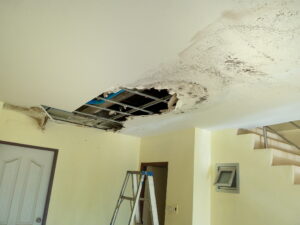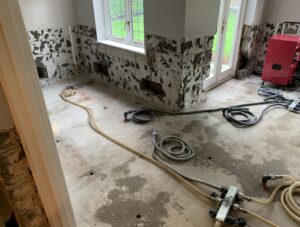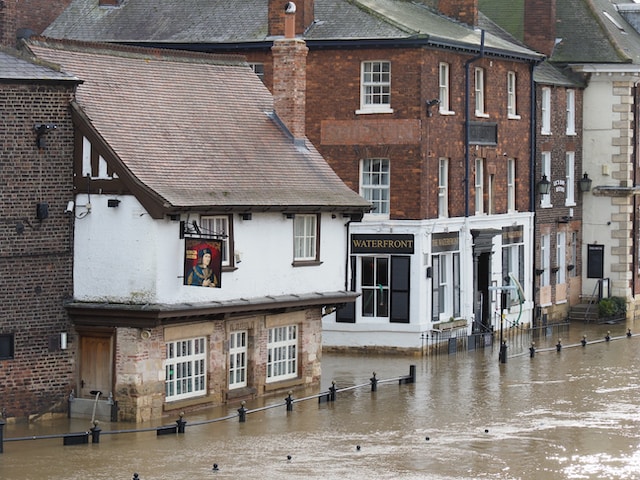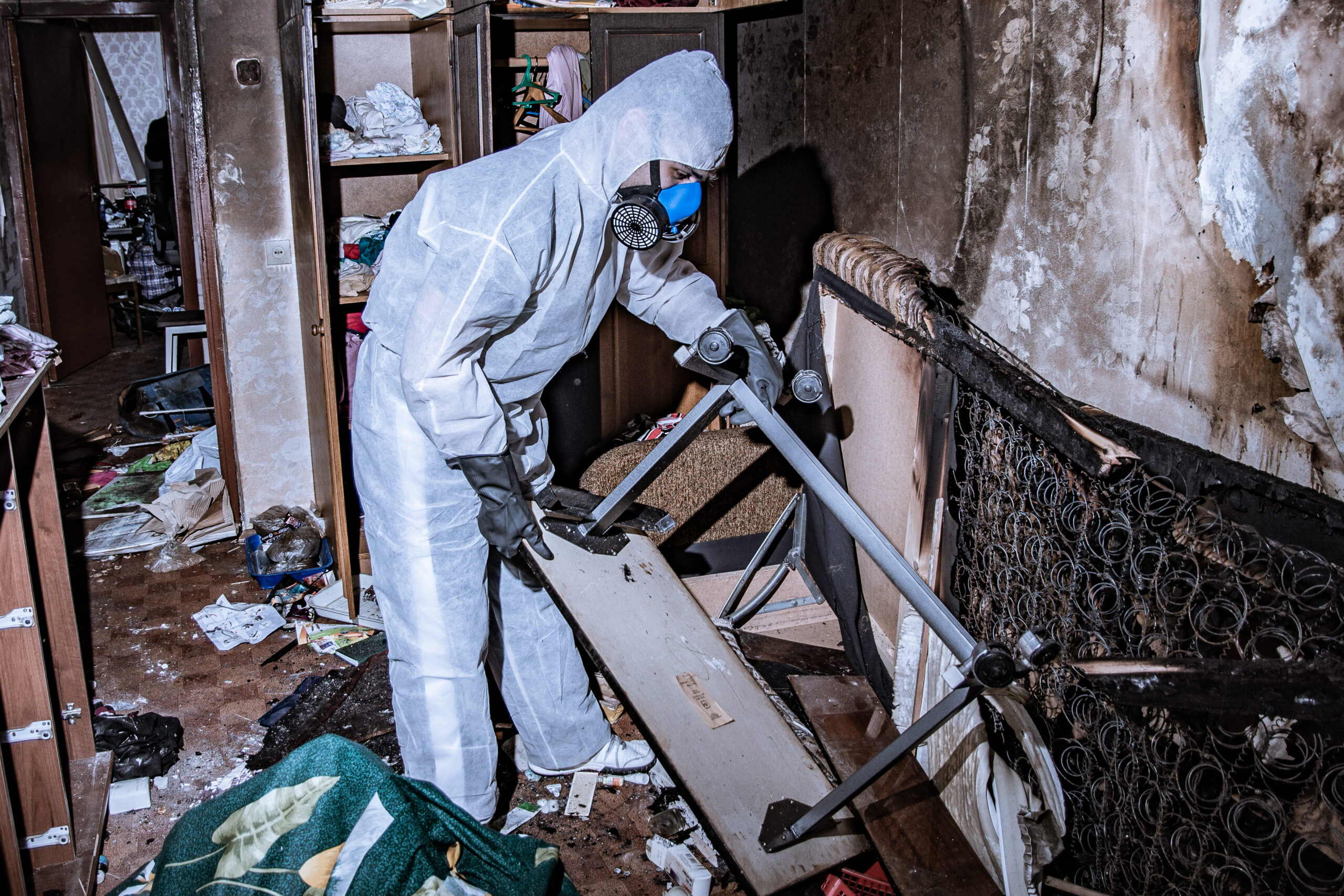Disaster restoration is a crucial service that plays an integral role in the recovery process following various types of property disasters. Property owners, home-owners and commercial building managers must recognise the value of disaster restoration services in light of ongoing natural disasters and other calamities across the UK.
In this blog post, we will investigate the key components of disaster restoration services and how they aid in restoring affected properties to their pre-disaster state. We’ll explore what companies specialising in disaster response do, including water removal techniques and mould mitigation strategies employed during the restoration process.
Furthermore, we will explain the flood restoration process by discussing damage assessment methods and infrastructure rebuilding efforts. Additionally, navigating insurance claims after a disaster can be challenging; hence we will provide insights on effectively handling such matters while maintaining clear communication with stakeholders throughout recovery efforts. Lastly, preparedness plans are vital for both residential and commercial properties – so stay tuned as we discuss developing emergency response strategies and training staff on disaster preparedness measures.
Table of Contents:
- The Importance of Disaster Restoration
- Responding to Various Types of Disasters Affecting Properties
- Assisting Communities During Difficult Times
- What Disaster Restoration Companies Do
- The Flood Restoration Process: What You Need to Know
- Insurance Coverage & Communication After Disasters
- Disaster Preparedness for Properties: Residential and Commercial
- FAQs in Relation to Disaster Restoration
- Conclusion
The Importance of Disaster Restoration

Disaster restoration is crucial for UK property owners to recover from natural disasters, accidents, and incidents such as fires, floods, or storms.
Responding to Various Types of Disasters Affecting Properties
Professional disaster restoration companies can help you recover from different types of disasters, including extreme weather conditions, fire, and flooding caused by burst pipes or heavy rainfall.
- Fires: Experts remove soot residue, deodorise affected areas, and reconstruct damaged parts.
- Floods: Specialists extract water, dry damp materials, and remediate mould.
- Storms: Professionals repair structures, remove debris, and ensure safety precautions are met.
Assisting Communities During Difficult Times
Disaster restoration companies like Northern Restorations work closely with local authorities and emergency response teams to provide valuable support throughout clean-up operations, helping communities return to normalcy sooner.
These professionals are capable of returning your property to its original state prior to the disaster, enabling you to concentrate on reconstructing your life.
What Disaster Restoration Companies Do
Disaster restoration companies are the superheroes of property damage, swooping in to save the day after events like fires or floods.
They use their expert training and equipment to quickly remove water, dry out affected areas, and prevent mould growth.
Some common techniques they use include extraction, drying, and air circulation.
When it comes to mould mitigation, they clean surfaces thoroughly, treat materials, and control humidity levels.
These professionals work tirelessly to ensure properties are restored efficiently and safely following any disaster event.
The Flood Restoration Process: What You Need to Know

Act fast when your property suffers from flooding to minimise damage and restore the building quickly.
Assessing Damages
Identify affected areas, evaluate structural integrity, and determine which materials have been damaged beyond repair.
Water Extraction & Drying Out
Remove standing water using powerful pumps or vacuums and dry out any remaining moisture within walls, floors or ceilings to prevent mould growth.
Mould Mitigation Strategies
- Air scrubbers: Filter airbourne contaminants such as mould spores during remediation efforts.
- Surface cleaning: Use specialised cleaning agents to treat surfaces affected by mould infestations.
- Damaged material removal: Remove materials that cannot be salvaged due to extensive contamination or irreversible damage.
Rebuilding Infrastructure
Replace drywall, install new carpets or floor coverings, and repaint affected areas to return your property back to its pre-loss condition.
Remember, the flood restoration process is complex and requires expert knowledge and specialised equipment. Hire an experienced professional like Northern Restorations to ensure a seamless reconstruction process.
Insurance Coverage & Communication After Disasters
When disaster strikes, act fast and contact your insurance provider for guidance on next steps.
Navigating Insurance Claims Post-Disaster
- Gather documentation: Collect all relevant documents, such as policy numbers and receipts for damaged items.
- Contact insurer promptly: Reach out to your insurer as soon as possible to begin the assessment process.
- Maintain records: Keep detailed notes and copies of correspondence to avoid disputes later on.
- Avoid permanent repairs until approval: Wait for approval from your insurer before undertaking any major repairs.
Communicating with Stakeholders During Recovery Efforts
Effective communication is key to successful recovery efforts after a disaster.
- Establish a point of contact: Designate one person to coordinate communications among all stakeholders.
- Create a communication plan: Develop a written outline detailing how and when information will be shared.
- Be transparent and honest: Share accurate and timely details about damages and timelines.
Returning your property to normalcy after a disaster can cost around £5 per square foot, but with proper planning, insurance coverage, and effective communication, losses can be minimised.
Disaster Preparedness for Properties: Residential and Commercial
Minimising damage to your property during disasters is crucial, and a well-thought-out plan can help protect your assets, reduce downtime, and ensure safety.
Developing an Emergency Response Strategy
- Storing extra supplies: Keep enough resources like food, water, blankets, torches, batteries, and first aid kits readily available.
- Gathering information about local resources: Know nearby shelters or relief centres that could provide assistance during emergencies.
- Crafting a formal written plan: Outline specific procedures for responding to various types of disasters.
Training Staff on Disaster Preparedness Measures
- Teach employees emergency response procedures for various disaster scenarios.
- Safety precautions: Educate employees on how to protect themselves and others during an emergency.
- Communication protocols: Establish clear lines of communication between team members.
By developing an emergency response strategy and training staff on disaster preparedness measures, you can help ensure the safety of your property’s occupants while also reducing financial losses due to downtime or lost revenue caused by these events.
FAQs About Disaster Restoration
Disaster Recovery vs Restoration: What’s the Difference?
Disaster recovery focuses on repairing structural damage and restoring utilities, while restoration goes beyond repair to address long-term issues like mould growth and water damage prevention.
The Role of FEMA in Disaster Recovery
FEMA coordinates response efforts, offers financial assistance, and helps rebuild infrastructure during major disasters in the US.
Major Issues Faced During Disaster Recovery
Assessing damages accurately, securing funding for repairs, navigating insurance claims, managing debris removal, dealing with contaminated water or hazardous materials, preventing secondary damages, and communicating effectively with stakeholders.
Why IT Recovery is Critical After a Disaster
Recovering IT infrastructure ensures continuity of critical services, such as communication channels and data storage, to maintain productivity levels and minimise downtime costs.
Disaster restoration is no joke, folks – it’s a crucial service for anyone who wants to protect their property from Mother Nature’s wrath.
Don’t wait until it’s too late – develop an emergency response plan and train your staff on disaster preparedness measures to minimise damages.
And let’s not forget about insurance – understanding your coverage and navigating claims post-disaster can be a headache, but it’s necessary for a smooth recovery.
So, whether it’s water damage or mould mitigation, call on the experts in disaster restoration to help you weather the storm. We’ve been around for over 27 years and know exactly what needs to be done, no matter what your situation is, or how dire!




